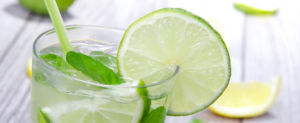Product developers need to control processing parameters to ensure peak finished cannabis beverage quality.
Beverages are ripe for innovation in the cannabis industry. New beverages are popping up in the market at a rapid pace. While all of these products are different in their positioning, marketing and delivery methods, from a beverage technology standpoint, they have some similarities and differences that hint at the technical consideration, challenges and options for adding a cannabis-based ingredient into a beverage.
Maintaining stability
When designing and developing a functional beverage, one of the biggest concerns a developer has are the effects that pH, processing and packaging choices will have on the active compounds in the product. Degradation of the active components will not only result in a product that doesn’t deliver on claims and/or the desired effect, it can also affect organoleptic properties and consumer acceptability of the product.
Organic compounds can be altered and degraded through a number of chemical reactions. Both cannabidiol (CBD) and tetrahydrocannabinol (THC) are prone to oxidation, and THC degrades to cannabinol (CBN), which does not have the same psychoactive properties as THC. Oxidation reactions are accelerated by heat, light and oxygen. Therefore, it will be important to control and reduce the exposure of the active components to these elements as much as possible.
Heat treatments can be reduced by opting for pasteurization, in which case the product will have a shorter shelf life and will need to be kept refrigerated. Another option is to decrease the pH of the product to below 4.6, which will allow for a 5 log reduction in microbial load instead of the 12 log reduction needed at neutral pH. In some cases, a preservative that is compatible with the pH and other design factors can be added instead of heat treatment, or combination with heat treatment. Some legal cannabis beverage manufacturers elect to acidify their products with ingredients like citric acid.
A second accelerator of oxidation reactions is oxygen. Several types of cannabis beverages on the market feature carbonation. While this design decision may be to appeal to a target market for recreational users looking for an alternative to beer, from a beverage technology standpoint, carbonation also reduces the oxygen content of the product. Other ways to reduce oxygen content in a beverage include nitrogen-flushing the headspace and choosing packaging materials with high oxygen barriers. Adding antioxidants to the product may also prove viable, but studies would be needed to determine effectiveness and dosage needed for the desired effect.
The third major contributor to oxidation is light. Beverages manufacturers can address this concern with their packaging choices, including using tinted glass or an aluminum bottle. Should a manufacturer choose to use a PET bottle, shrink wraps with UV protective layers could be used.
While CBD and THC are the two most prevalent active compounds in cannabis, terpenes should also be addressed. Terpenes are volatile aroma compounds naturally occurring in cannabis plants and impart much of the flavor and aroma associated with cannabis products. Terpenes can be removed during the extraction of THC and CBD oils. However, there is evidence that myrcene—the main terpene in cannabis—might have a synergistic effect with THC. Therefore, manufacturers may be looking for ways to include it in their beverages. As with THC and CBD, it will be critical to keep the temperature below vaporization levels during processing in order to avoid degradation of the compounds.
Ingredient considerations
Beverages developers must first have a quality raw material to work with. The extraction method chosen will determine the attributes of the raw material. The extraction method of choice is CO2 extraction. The extraction may be supercritical or subcritical, each resulting in different oil compositions. Subcritical extraction will retain more terpenes, while supercritical extraction may degrade heat sensitive compounds but extract heavier cannabinoids.
In addition, product developers will need to know whether or not the extraction has undergone the decarboxylation process. This is the process of activating THC-A to the active form of the compound THC. For recreational beverages, it will be advantageous to source an oil where decarboxylation has already taken place. On the other hand, medical applications may need the THC-A still intact.
The THC and CBD oil will be standardized by diffusing a known amount of extract into a carrier oil. Selection of a carrier oil will be a balance between its functionality in the beverage application and its physiological function in the body. From a processing standpoint, it will be advantageous to use an oil with high stability against both oxidative and hydrolytic rancidity so as to prolong the shelf life of the product. However, oil may also be selected for its effect on bioavailability of the active compounds and may not always be the most stable oil. Carrier oil selection should take both factors into consideration.
Because CBD and THC are oil-soluble, it will be necessary to create an oil-in-water emulsion in order to disperse the ingredient throughout the product. Mechanical and chemical means of emulsification are both options and are often used together. Cannabis-infused beverages are no exception.
Emulsification plays an important role not only in the physical stability and uniformity of the product, but also in the functional properties of the beverage. Research has shown that the size of the oil droplets—and, therefore, the method of emulsification of the active components—might accelerate uptake of the active compounds, resulting in a faster effects on the body. Products looking to deliver rapid effects to users should consider differences in mechanical emulsion techniques such as micro and nanoemulsions.
There is considerable research in this area. Some companies have opted to patent their findings, while others have proprietary methods for creating these emulsions that are said to result in more-rapid uptake into the body. In contrast, beverages designed for treatment of chronic pain conditions and other medical applications may want a slower uptake into the body. These products might be able to use more-traditional emulsification droplet sizes seen in the beverage industry achieved by a combination of chemical and mechanical emulsification techniques.
Another key product design factor is flavor development. Recreational consumers looking to replace beer may be looking for a hoppy, beer-like flavor or some other familiar, refreshing flavor. These consumers might be looking for the aroma and taste traditionally associated with cannabis ingredients. The characteristic flavor and aroma compounds associated with cannabis products are imparted by terpenes. Terpenes should be added and/or retained for recognizable cannabis aroma and flavor.
On the other hand, companies may be looking to cover the attributes CBD, THC and terpenes can impart to the beverages. Options for this include the use of masking flavors, as well as manipulation of sweetness and acidity to decrease the intensity of the flavor perception.
Next-generation products
As popularity and consumer acceptance of CBD and THC increase, beverage companies might look to combine those active components with other functional ingredients. This will increase the likelihood that that these functional components will interact with each other. Topline considerations include oxidation/reduction reactions with other compounds, protein interactions, and interactions with fortifying agents, such as vitamins and minerals. All of these interactions will lead to degredation of functional components, increasing the need for proper product development processes to ensure consist, quality products are delivered to the market.
Companies may also start to look at other beverage formats, such as ready-to-mix powdered products. As part of food safety measures, powder products have a low water activity (aw). Low aw retards microbial growth. However, oxidation rates are higher at low aw. In addition, other oxidation reaction accelerators previously mentioned will still exist. There will also be risk of degradation of the active components due to processing. Spray drying will be the most-severe heat treatment, followed by agglomeration and then dry blending. Liquid oil can be applied in all of these applications, but agglomeration and dry blending will have limitations on how much oil can be sprayed on before flow properties are affected. To control oxidation, powdered oils may be an option, as they are more stable against oxidation than oils sprayed onto the exterior of powder particles.
One of the biggest challenges in today’s legal cannabis beverage market is delivering consistent products. While this area can be heavily influenced by user expectations and preferences, companies should be looking for ways to measure, monitor and decrease variability in their products. Proper analytical testing of raw materials—in-process, post-process and over shelf life—will be critical. Shelf life, processing parameters and/or dosage level of the active component may need to be adjusted to deliver the best, most-consistent product to consumers. The addition of other functional components has the potential to complicate the above processes.
Companies looking to develop a cannabis-infused product should work with a food scientist. Experienced food scientists, such as our team at Wisebev, will be able to help companies gather and interpret appropriate data and make product design decisions based on these data, resulting in consistent, high-quality products that will meet consumer expectations. Contact us today and let’s discuss how we can get you cannabis beverage to market.
Lindsay Wisener is the founder and principal consultant at WiseBev, LLC, a beverage consulting and development company. She obtained her B.S. and M.S. degrees in food science from Purdue University. Lindsay has 10 years of experience developing functional and nutritional beverages. She can be reached at lindsay@wisebev.com or via phone at 765-729-9843.
This post was published by PreparedFoods and may be found on their website here:
https://www.preparedfoods.com/articles/121745-formulating-legal-cannabis-beverages







